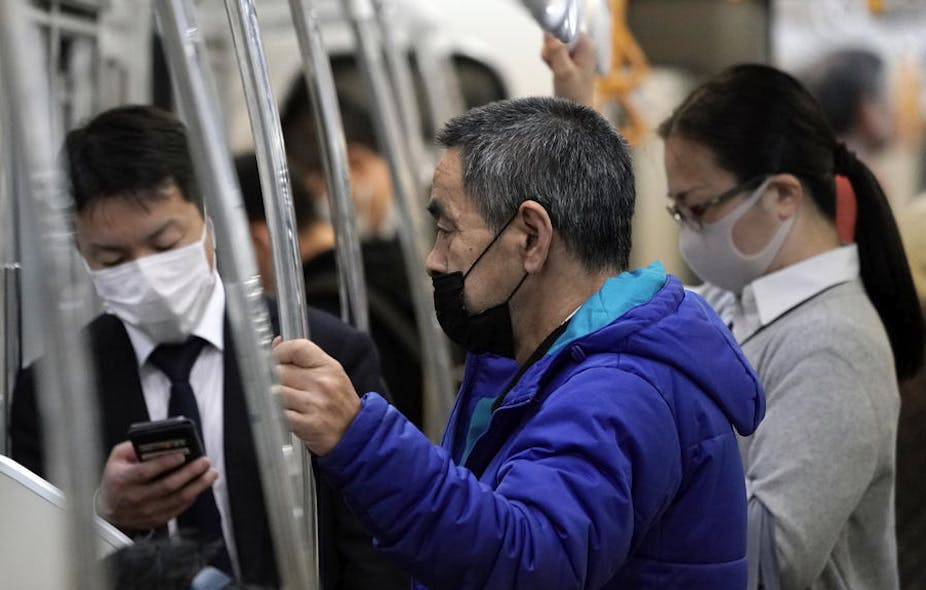The number of deaths and infections from the global coronavirus pandemic is now larger outside China, where the outbreak began, than inside the country. Italy, Iran and South Korea, China’s neighbour, have been among the countries worst hit by the virus.
According to the World Health Organization (WHO), Japan had 814 cases as of March 17. Even taking into account the 712 cases from the the cruise ship Diamond Princess, which was berthed at the port of Yokohama for more than three weeks as the virus spread through its passengers and crew, Japan’s cases are just over 1,500.
So why is the infection rate relatively low, given Japan’s proximity to China?
The main answer seems to be that Japan has not conducted extensive coronavirus testing, especially in comparison to countries such as South Korea and Italy, which have aggressively tested people for the virus.
Political bureaucracy
This may have to do with Japan’s policy-making system. The Japanese prime minister and Cabinet Office increased their power to make policy as a result of administrative reforms since the 1990s, while the power of bureaucrats and MPs declined to some extent.
Yet despite this, Japan’s policy towards the coronavirus seems to be centred on discussions at expert meetings under the jurisdiction of the Ministry of Health, Labour and Welfare (MHLW). Although the office of Prime Minister Shinzo Abe played a role in making decisions to prevent the spread of the coronavirus by convening several meetings, those decisions were based on the MHLW’s expert policy recommendations.
Read more: Coronavirus weekly: expert analysis from The Conversation global network
The MHLW’s expert meetings have been led by the director of the National Institute of Infectious Diseases (NIID). The priority of the NIID was epidemiological surveys and its policy recommendations were aimed at “high-quality” testing rather than providing flexible medical treatment to as many patients as possible.
Until mid-February, the MHLW permitted polymerase chain reaction tests, which take between three and six hours to show a result, to be conducted only at public health centres. Along with the MHLW’s prohibition of using simple test methods provided by private companies to avoid imprecise test results and data, the limited availability of coronavirus tests caused a severe shortage of testing capacity.
Compared to the number of tests conducted in South Korea (more than 248,000 so far), the number in Japan has been just over 10,000.
The small number of tests was due to the slow bureaucratic response, which was also seen in the poor crisis management by the MHLW of the Diamond Princess case.
The suspicion was that the government had conducted only a small number of tests in Japan to hide the scope and severity of the infection, partly due to the Abe administration’s determination to hold the 2020 Olympics in Tokyo.
Read more: Tokyo Olympics: how coronavirus is hitting preparations
It was only in early March, after mounting criticism, that the MHLW decided to permit the use of simpler test kits in private hospitals and cover the cost of tests with national health insurance. However, it’s still necessary to obtain an authorised doctor’s approval to take a test privately.

Crisis management
Other factors may have contributed to Japan’s relatively low rate of coronavirus infection, such as the government recommendation to close schools until the beginning of the spring break and the cancellation of sports events and concerts. However, these measures have also been taken by other governments around the world, and their impacts are difficult to measure. And Abe’s decision to close schools without consultation with his own party, opposition parties, or the governors and education committees of Japan’s prefectures, was severely criticised.
Japanese people’s reputation for cleanliness may be relevant, although its impact is also difficult to measure. Japan’s lack of well-financed government agencies aimed at disease prevention may also be relevant. Japan’s NIID may not be capable of leading the task of preventing widespread disease.
There is also the question of what the Japanese government learnt about crisis management from the Fukushima nuclear disaster in 2011. The problem of insufficient coordination among government ministries and between the government and the private sector identified in the wake of the disaster still exists, as does a lack of strong leadership by the prime minister.
The political mismanagement of the coronavirus crisis has also led to the plummeting of stock prices and had a catastrophic impact on the Japanese economy and society. Japan needs better crisis management, with stronger and clearer political leadership by the prime minister, and better coordination among political institutions.

